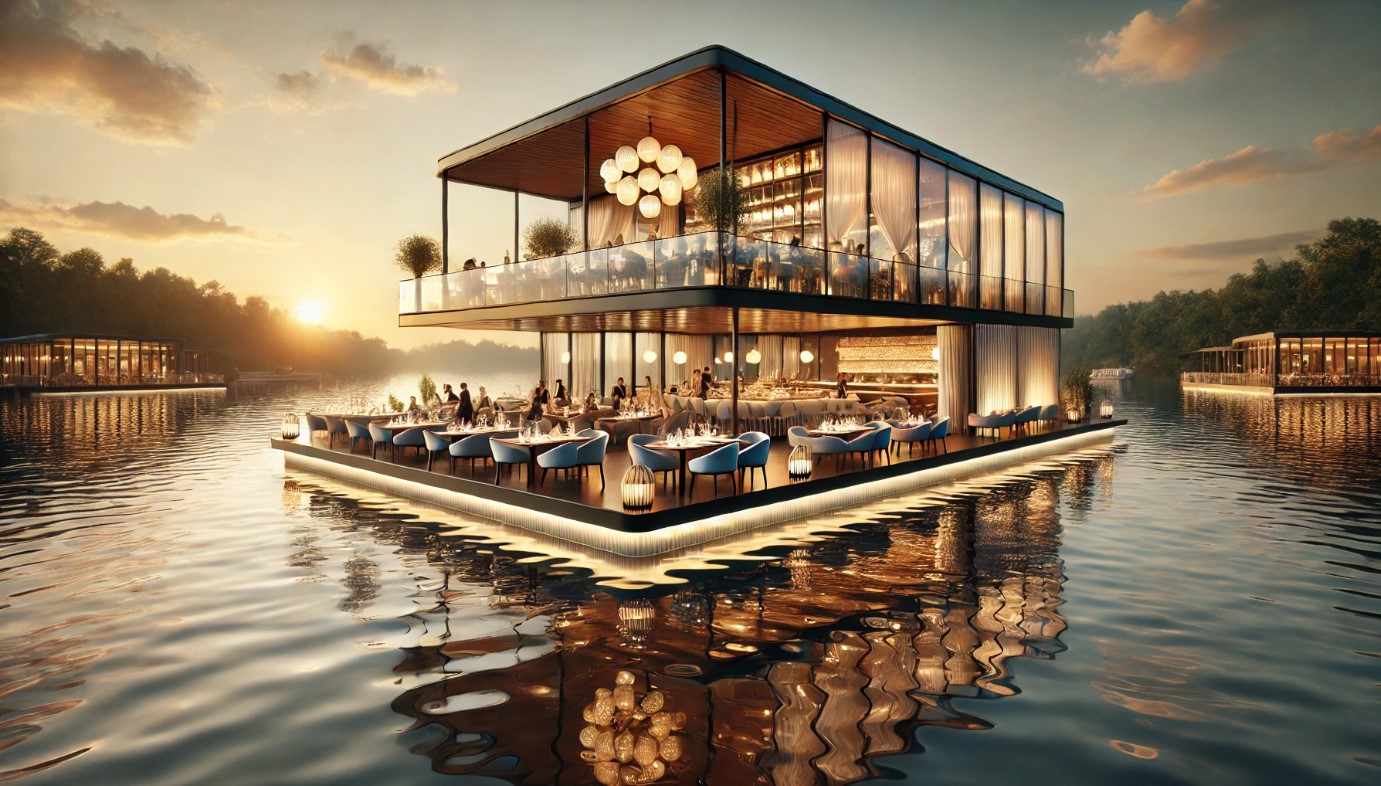In recent years, the dining industry has seen an influx of innovation, with entrepreneurs and restaurateurs continuously seeking new ways to captivate the interest of their patrons. Among the most exciting developments is the emergence of floating restaurants and bars, offering a unique blend of culinary delight and breathtaking aquatic views. These floating establishments are not just about dining; they are about crafting memorable experiences that marry gourmet cuisine with the serene beauty of water landscapes. As this trend gains momentum, it is reshaping the way we think about dining and leisure.

The concept of floating restaurants and bars has historical roots that stretch back centuries, showcasing humanity’s long-standing fascination with dining on water. The idea of floating dining venues isn’t a modern invention; it has evolved over time from various cultural practices around the world.
One of the earliest examples can be traced to floating tea houses and riverboat dining in regions such as East Asia and Europe. In Japan, for instance, the concept of Yakatabune—traditional wooden pleasure boats—has been popular for centuries. These boats were often equipped with dining facilities where guests could enjoy meals while cruising along rivers or in calm coastal waters, surrounded by the beauty of nature. The experience was not just about the food but about enjoying a serene and picturesque environment.

In Europe, particularly along the rivers of Paris and Venice, riverboats have been used for dining and entertainment since at least the 19th century.
In Paris, the famous bateaux mouches (sightseeing boats) have long offered meals as part of their river cruises, allowing patrons to enjoy the sights of the city while dining on fine French cuisine.

In Venice, dining on gondolas or other small boats has been a romanticized experience for both locals and tourists for centuries.

The Rise of Floating Venues
The concept of floating restaurants and bars is not entirely new, with early examples dating back to floating tea houses and riverboat dining in various parts of the world. However, the modern iteration of this concept is far more sophisticated and versatile. From elegant houseboats transformed into intimate dining spaces to grand yachts offering luxurious dining experiences, the spectrum of floating venues is expanding rapidly.

Several factors contribute to the rising popularity of these venues. First and foremost, they provide a novel setting that distinguishes them from traditional land-based establishments. Diners are drawn to the allure of eating on water, where the gentle sway of the boat, the sound of lapping waves, and panoramic views create a serene and romantic atmosphere. For urban dwellers, these floating venues offer an escape from the hustle and bustle, making them a preferred choice for special occasions.

Designing the Perfect Floating Dining Experience
Creating a successful floating restaurant or bar involves more than just placing a dining area on a boat. It requires careful consideration of design, functionality, and sustainability. The layout must maximize the available space while ensuring that guests have unobstructed views of the surrounding water. Interiors often feature nautical themes or modern minimalist designs that complement the natural beauty outside.

In terms of functionality, the kitchen and bar areas must be equipped to handle the unique challenges of operating on water. This includes ensuring that all appliances are secured, and that food and drinks can be prepared and served smoothly even when the vessel is in motion. Additionally, the choice of materials is crucial; they must be durable, water-resistant, and capable of withstanding the humid marine environment.

Sustainability is also a key consideration. Many floating restaurants and bars are embracing eco-friendly practices, such as using solar power, implementing water recycling systems, and sourcing local, sustainable ingredients. This not only reduces their environmental impact but also resonates with the growing number of consumers who prioritize sustainability in their dining choices.
A Diverse Culinary Landscape
Floating restaurants and bars are as diverse in their culinary offerings as they are in design. Some focus on delivering high-end gourmet experiences, with multi-course meals prepared by renowned chefs. Others may offer more casual dining, with a focus on fresh seafood or local cuisine. The beverage offerings are equally varied, with some floating bars specializing in craft cocktails, fine wines, or local brews.

One of the key attractions of these venues is the ability to offer unique, location-specific experiences. For instance, a floating restaurant in the Maldives might serve a menu centered around fresh catch from the Indian Ocean, while one in Venice might focus on traditional Italian cuisine paired with regional wines. This connection to the local environment and culture enhances the authenticity of the dining experience.

Challenges and Opportunities
While floating restaurants and bars offer many advantages, they also come with unique challenges. Operating on water requires adherence to stringent safety regulations, including the provision of life jackets, fire safety equipment, and emergency protocols. Weather conditions can also pose a challenge, requiring careful planning and contingency measures to ensure the safety and comfort of guests.
However, these challenges are often outweighed by the opportunities. Floating restaurants and bars can operate in a variety of locations, from rivers and lakes to coastal areas and even the open sea. They can be designed as permanent fixtures or as mobile venues that can move between locations. This flexibility allows operators to tap into different markets and attract a diverse clientele.
Moreover, the novelty of the concept provides a strong marketing advantage. Floating venues can capitalize on the growing trend of experiential dining, where the focus is not just on the food, but on the overall experience. By offering a unique setting, personalized service, and a connection to the natural environment, these establishments can create lasting memories for their guests.

The Future of Floating Dining
As the trend of floating restaurants and bars continues to grow, we can expect to see even more innovative concepts emerge. Advances in technology will likely play a significant role, with developments in marine architecture, renewable energy, and sustainable materials making these venues more efficient and environmentally friendly. Additionally, the integration of digital experiences, such as augmented reality dining or interactive culinary experiences, could further enhance the appeal of floating venues.

In conclusion, floating restaurants and bars represent a new wave of dining experiences that seamlessly blend the allure of water with exceptional cuisine and service. V-Marine shares this vision and is actively working towards making these extraordinary venues a reality. As consumers increasingly seek unique and memorable experiences, the demand for floating dining spaces is set to grow, driving innovation and expansion in this exciting segment of the industry. Whether it’s for a romantic dinner, a casual brunch, or a sunset cocktail, V-Marine’s floating venues promise unforgettable experiences that go beyond the ordinary.




